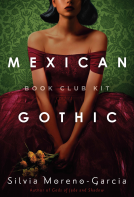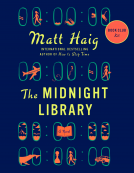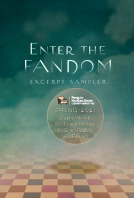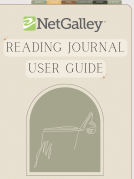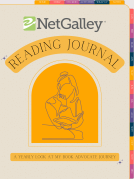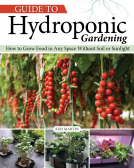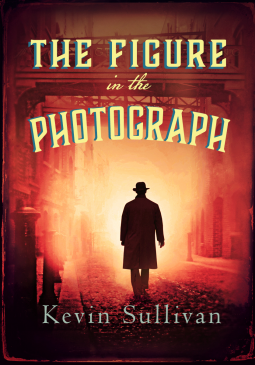
The Figure in the Photograph
by Kevin Sullivan
This title was previously available on NetGalley and is now archived.
Send NetGalley books directly to your Kindle or Kindle app
1
To read on a Kindle or Kindle app, please add kindle@netgalley.com as an approved email address to receive files in your Amazon account. Click here for step-by-step instructions.
2
Also find your Kindle email address within your Amazon account, and enter it here.
Pub Date Apr 23 2020 | Archive Date May 18 2020
Talking about this book? Use #FigureInThePhotograph #NetGalley. More hashtag tips!
Description
The first novel in a new gritty crime series set in late nineteenth century Scotland.
1898. Juan Camerón’s father is killed while working as a photographer amidst the chaos of war in Cuba, but his last pictures reveal a sinister truth to his final moments…
Juan travels to Scotland to grieve with family and immerses himself in the study of photography. When he invents a device that inadvertently solves a crime, local law enforcement recruit him to help stop a brutal serial killer plaguing the streets of Glasgow.
Available Editions
| EDITION | Hardcover |
| ISBN | 9780749025311 |
| PRICE | £16.99 (GBP) |
Average rating from 24 members
Featured Reviews
Really enjoyed this book. Some early reviews made me question its prose, but I found the pacing really good as our narrator Juan Cameron is a photographer and the writing reminds me of how a photographer looks at things, picking up a lot of details we might miss. And that is basically the premise of this book. Juan and his father are sent to photographs architecture in Cuba right as the Spanish-American War began. Due to tragedy Juan ends up inheriting land in Cuba and Scotland where he returns. He helps police to solve a murder by the use of his camera which photographs shots of daily life at a regular interval and then can try and discern patterns that might help determine the identity of the killer.
From here he is sent to Glasgow to help their police solve a group of serial killings. He sets up his camera in two locations, with autotimer device, and from there can get an idea of who might be the killer. I know some have stopped reading the book, but I just found it an interesting use of photography and the plot gets better and better the further into the book. Who might be involved? A minister, policeman, hotel owner, store owner, etc. the list of possibly suspects is long and the ending is very well done. Having recently read Dickens and “I, Claudius” this book was a breeze for me. Very well done, I really enjoyed the plot, the characters, and the settings in Cuba and Scotland in the 1890’s. Thanks to NetGalley, as well as Allison & Busby for the free copy of this book in return for my honest review.
 Sarah-Hope P, Educator
Sarah-Hope P, Educator
Kevin Sullivan's The Figure in the Photograph is a great addition to the body of historical mysteries. At the book's opening, a peripatetic, father-son team of photographers is in Cuba during the Spanish-American war photographing historic buildings likely to be slated for destruction.
When the father is killed, his son, Juan Camarón, travels to Scotland to deliver their photographs to their publisher. By chance he becomes involved in the invention of a new type of camera: one that can be set up to take a series of six pictures of a single location at regular intervals. Camarón, called Cameron in Scotland, helps solve a murder using this new technique to monitor the scene of a crime, and, as a result, is invited to work with the police in an attempt to capture a serial killer who has been active in a Glasgow slum.
That's the set up, and I leave the rest of the story for readers to enjoy unraveling for themselves.
What I want to say is that not only is this title an engaging read—it would make a solid first volume in an ongoing series, which I hope will be the case. The characters are well-drawn and complex, not stereotypes of their era, but also not inappropriately "modern" as can be the case in historical mysteries. Besides Camarón, there are several other characters worth retaining and working into future volumes.And, at the close of this novel, Camarón is thinking of leaving still photography to become in the new technology of film (the movie kind). This opens up all sorts of possibilities for new adventures—I hope they are forthcoming.
I received a free electronic review copy of this title from the Publisher via NetGalley. The opinions are my own.
 Librarian 431790
Librarian 431790
I took me a bit to be involved in this story as I found the beginning a bit slot but once I was hooked I couldn't put it down.
I liked the well researched and vivid historical background, the well thought cast of characters and the plot that flow.
The mystery is solid and kept me guessing.
I look forward to reading other instalment in this series.
Recommended.
Many thanks to the publisher and Netgalley for this ARC, all opinions are mine.
 Susan M, Reviewer
Susan M, Reviewer
1898. Juan Cameron's father, a photographer, is on assignment in Cuba to photograph the architecture, when he is killed during the war. In his last photographs his killer is revealed. But Juan travels to Scotland to deliver the remaining photographs. Having several weeks to wait for a meeting he invents a device allowing time lapse photography, which inadvertently helps solves a crime. On hearing of this Sergeant Macarthur involves him in the investigation of a series of brutal killings in Glasgow. Cameras placed in two locations with photographs taken at regular intervals may give the police a list of suspects to investigate
Quite a slow paced story but overall an interesting one with its plot and characters.
Readers who liked this book also liked:
Silvia Moreno-Garcia
Historical Fiction, Literary Fiction, Sci Fi & Fantasy
Rachel Joyce
Historical Fiction, Literary Fiction, Women's Fiction
Publishers Lunch
General Fiction (Adult), Nonfiction (Adult), Teens & YA
Brian Soonho Yoon
Children's Nonfiction, Crafts & Hobbies
Sam Morrison
Children's Nonfiction, Crafts & Hobbies, Outdoors & Nature

